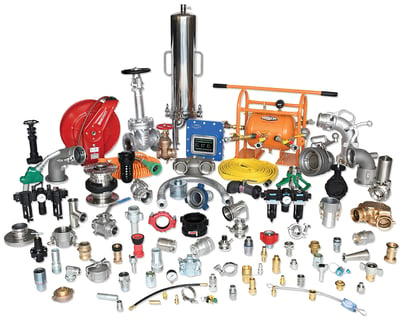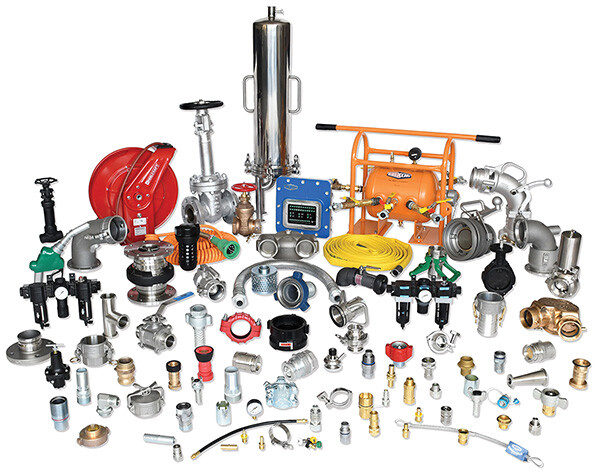
In the wake of the COVID-19 pandemic and subsequent supply chain and labor shortages, the manufacturing industry faced a number of challenges in 2021. As a result, manufacturers have had to find creative ways to rapidly respond to customer demands while at the same time staying one step ahead of industry trends and the competition.How has the manufacturing industry changed over the past few years and what trends do we expect to see in 2022? Two key Dixon® leadership members share their thoughts on what the industry can expect in the new year and how our team will continue putting our customers first.

Photo courtesy of Stock/MicroStockHub
Automation and technology innovation
"This past year, the manufacturing industry has been understaffed and material-constrained due to the supply chain crisis," says Frank Rosenthal, General Manager of Dixon's Boss® division. "And because of the dramatic swing in demand due to recovery from the pandemic, I would say that one of the things that have changed is that automation and other productivity improvement technologies are becoming even more attractive."
In 2021, manufacturers utilized more automation to make up for the worker shortage and to eliminate time-consuming and error-prone tasks. Technologies like artificial intelligence (AI), machine learning, and smart machines improve decision-making, quality, and consistency. At Dixon, we've added automated equipment to our factories for years, but the recent demand for automation tools as a result of the pandemic has made it much more important and affordable.
"Over the last few years, especially at the beginning of the pandemic when there was a drop in demand, we were able to spend more time analyzing and trying to implement some of the new technology that's out there," says Frank.
There are two particular areas that we've experimented with in our Dixon factories and our recently expanded Dixon Innovation Center: bin picking and cobots.
Bin picking is when a robot with sensors and cameras attached to it can pick up known objects out of a bin using a suction gripper, parallel gripper, or another kind of robot end-effector. "We basically position a cage of raw castings next to the machine and the robot is smart enough to be able to orient itself and see how to grab each one and pick it up and put it on the machine for us," Frank explains.
The other technology we're experimenting with is cobots, which is short for "collaborative robots," designed to work alongside human employees. A cobot is a mobile robot; it has an arm that picks up unfinished parts and puts them in a machine and, when they're finished, puts them in a crate. "The trade-off is that they're a bit slower for safety reasons, but they've got a vision system and the intelligence to work really well alongside a human being," says Brian Zottarelli, General Manager of Dixon's Specialty Products division.
However, just because we're implementing this new technology and automation at Dixon, it doesn't mean we're letting go of employees.
Hiring and staffing
"A lot of the time people see or hear that we're using robots and they ask, 'Are you displacing people?' The answer is no, it's not a situation where we get these robots and lose a bunch of people," says Frank. "It's just that the job descriptions change and the training that employees need gets more intense. We still need people to work alongside the automation, and do the programming setup and maintenance. This technology is more about making the people that we have more productive, not replacing them."
In fact, the manufacturing industry has had the opposite problem when it comes to hiring and staffing. "Right now, we’re having a very difficult time — as is everyone — hiring people, especially people with experience," says Frank. "I hope we see a better labor market in 2022."
The U.S. manufacturing industry is looking to fill nearly half a million job openings, according to a report released by Deloitte and the Manufacturing Institute (MI). There are multiple reasons why these positions are going unfilled. For example, many younger workers have different expectations for jobs and careers or a lack of interest in the industry. Additionally, many of these roles had previously been filled by members of the Baby Boomer generation who decided to retire during the pandemic. "We're bringing folks in and training them, and we've got a good training program to help them grow their careers. We're definitely looking at all options to try to get people," Frank adds. Read more about Dixon's Competency-Based Apprentice Program.
Onshore versus offshore
The pandemic and supply chain crisis have brought up the old debate of onshore versus offshore manufacturing. With the rising fuel costs, global trade shutdowns, and anti-dumping protectionist tariffs, many companies are reshoring facilities and increasing their reliance on countries with whom the U.S. has friendly trade agreements, such as Mexico and Canada.
"The competition now is more about having the product," says Frank. "We actually had a nice recovery in 2021, and I think that a decent part of that is because we have U.S. manufacturing, so we've got more product on the shelves than our competitors who were relying strictly on imported products from overseas."
In the long term, United States manufacturing production is projected to continue to trend up in 2022, according to Trading Economic. “So, the benefit of U.S. manufacturing might not be as temporary as some might think,” says Frank.
Which leads us to our fourth manufacturing trend for 2022…
Product availability

"Right now, it's all about who has stock," says Brian Zottarelli, Division Manager of Dixon Specialty Products. Historically, Dixon has been a supplier that our customers can count on to have stock on the shelf when they need it and have it shipped the same day. Therefore, having stock has led to new business opportunities that we didn’t necessarily plan for.
"For Dixon to see opportunities from customers who don't rely on us as their primary source just because they're trying to find anybody that has product, really drives that point home," Brian adds.
At Dixon, we have multiple North American foundries that supply a lot of our castings. One of which is only 90 minutes away from our headquarters in Chestertown, Maryland so we’ve been able to roll material from them faster than what some of our competitors have been able to get from their suppliers.
"Price is always going to be important, but the availability of product is what customers cared about most in 2021 and will continue to care about in 2022." Frank says, "Quality is assumed when you buy a product from Dixon, but right now having the product on the shelf is just as important, at least for the foreseeable future."
At Dixon, we've been able to take these industry hits from the pandemic and supply chain crisis and find new ways to operate. "The silver lining is that it caused some healthy belt-tightening. We had to reduce our costs as much as we possibly could. Dixon did a really good job of that," says Frank. "And during this time where it’s difficult to hire, it’s forced us to do more with less as we try to rebuild."
It's safe to say that at Dixon, we're ready to face any challenges that come our way in 2022. If you have any questions about our products and services, get in touch with a specialist today by calling 877.963.4966.


